
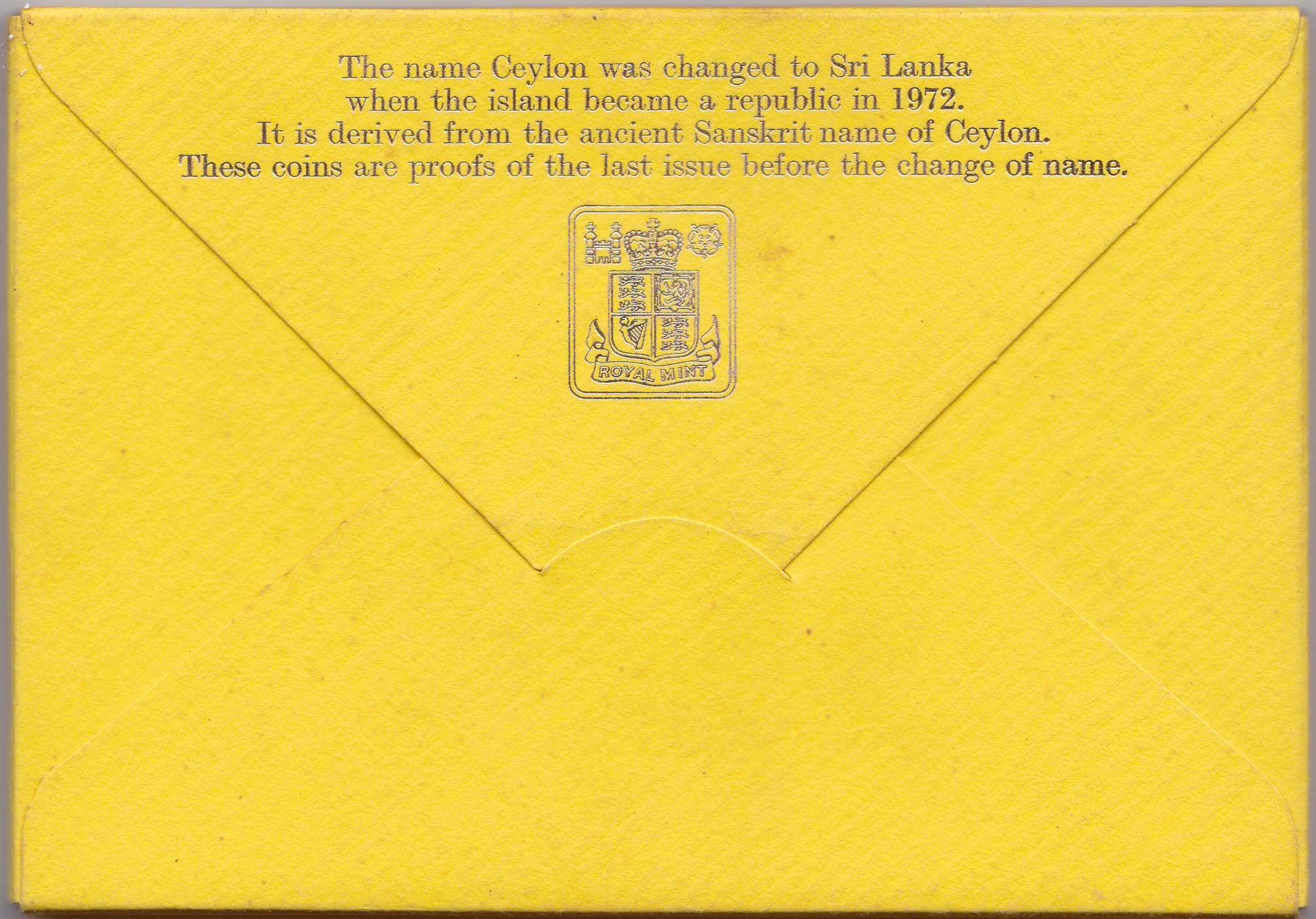
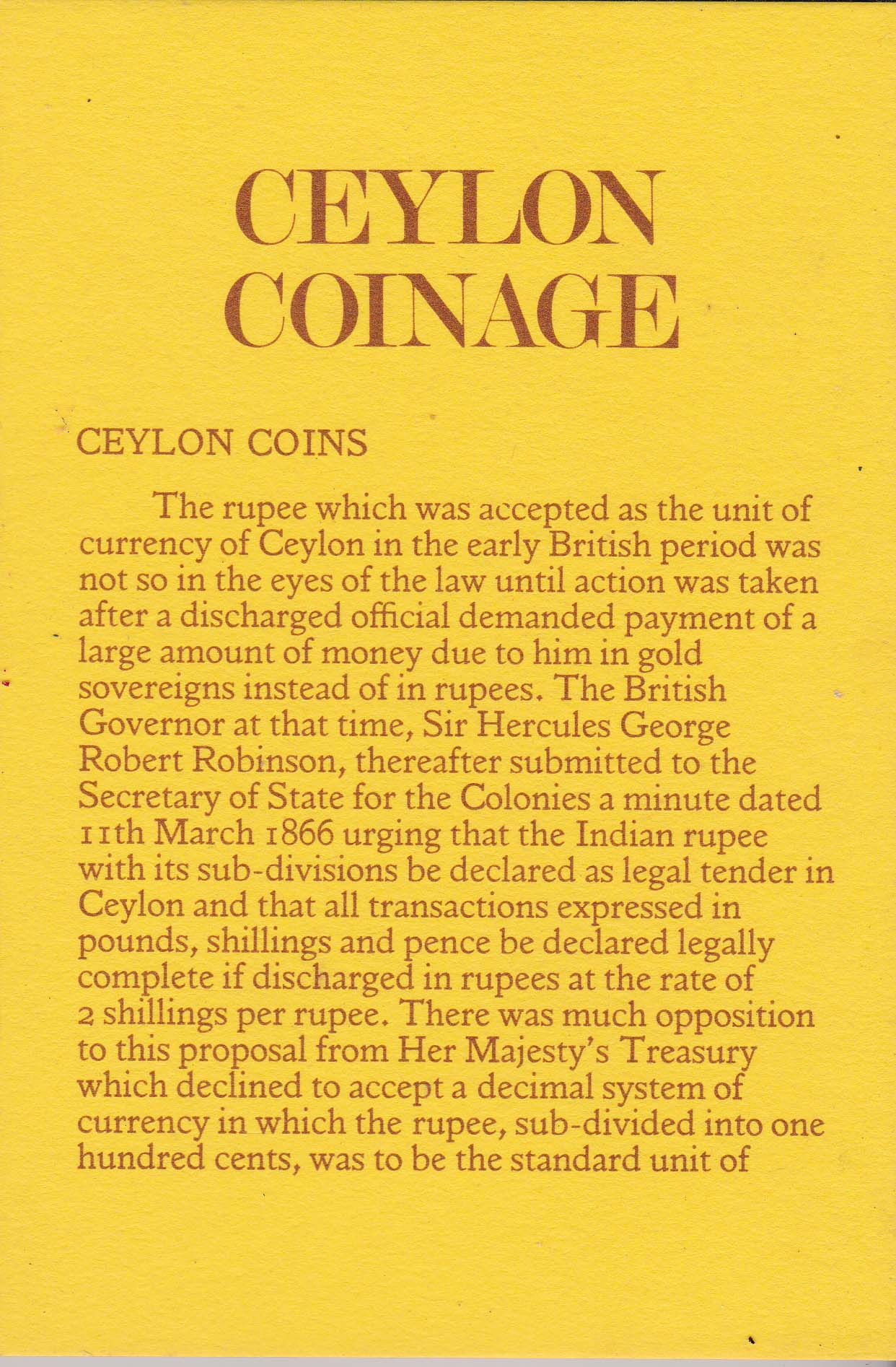
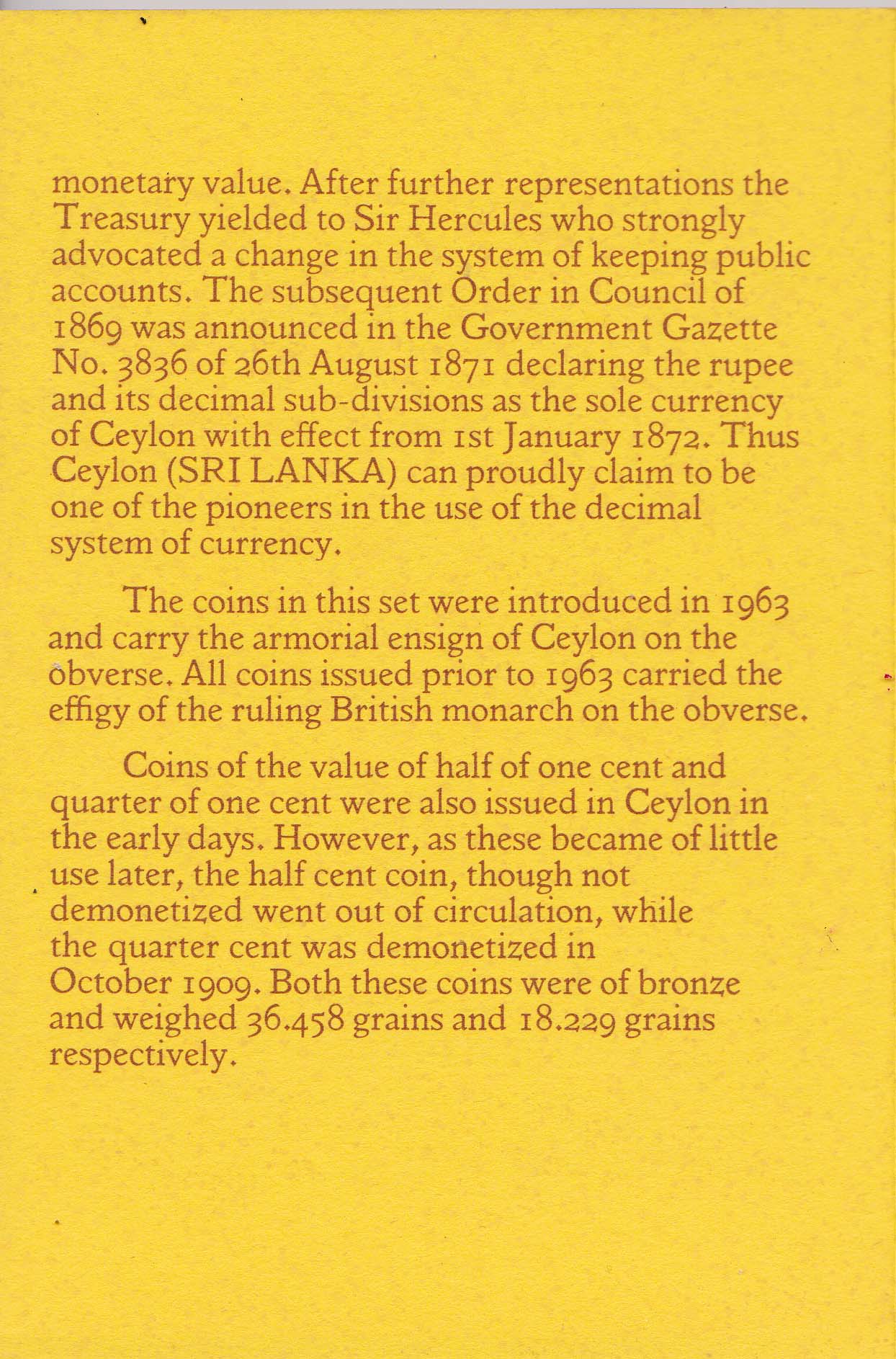

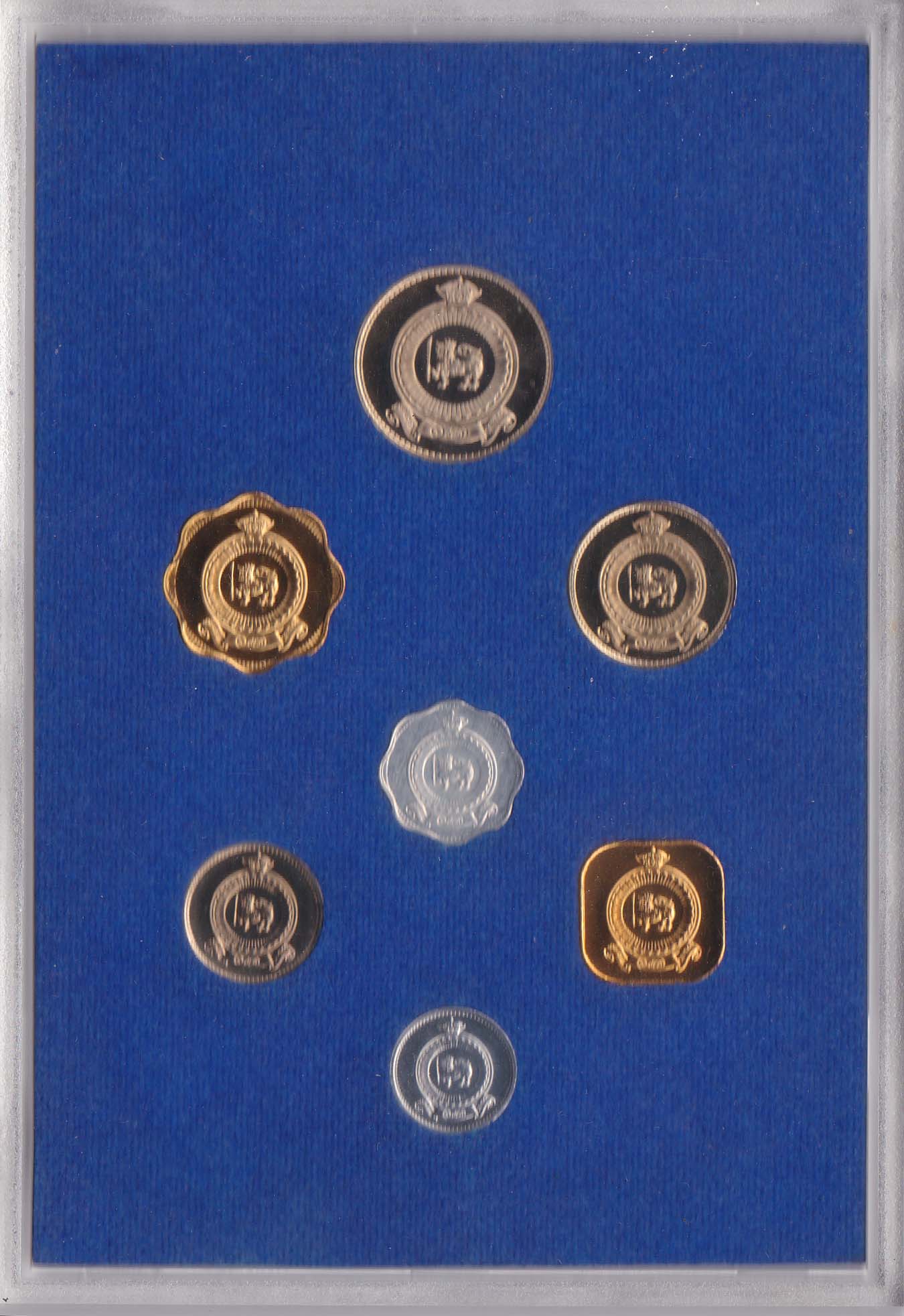
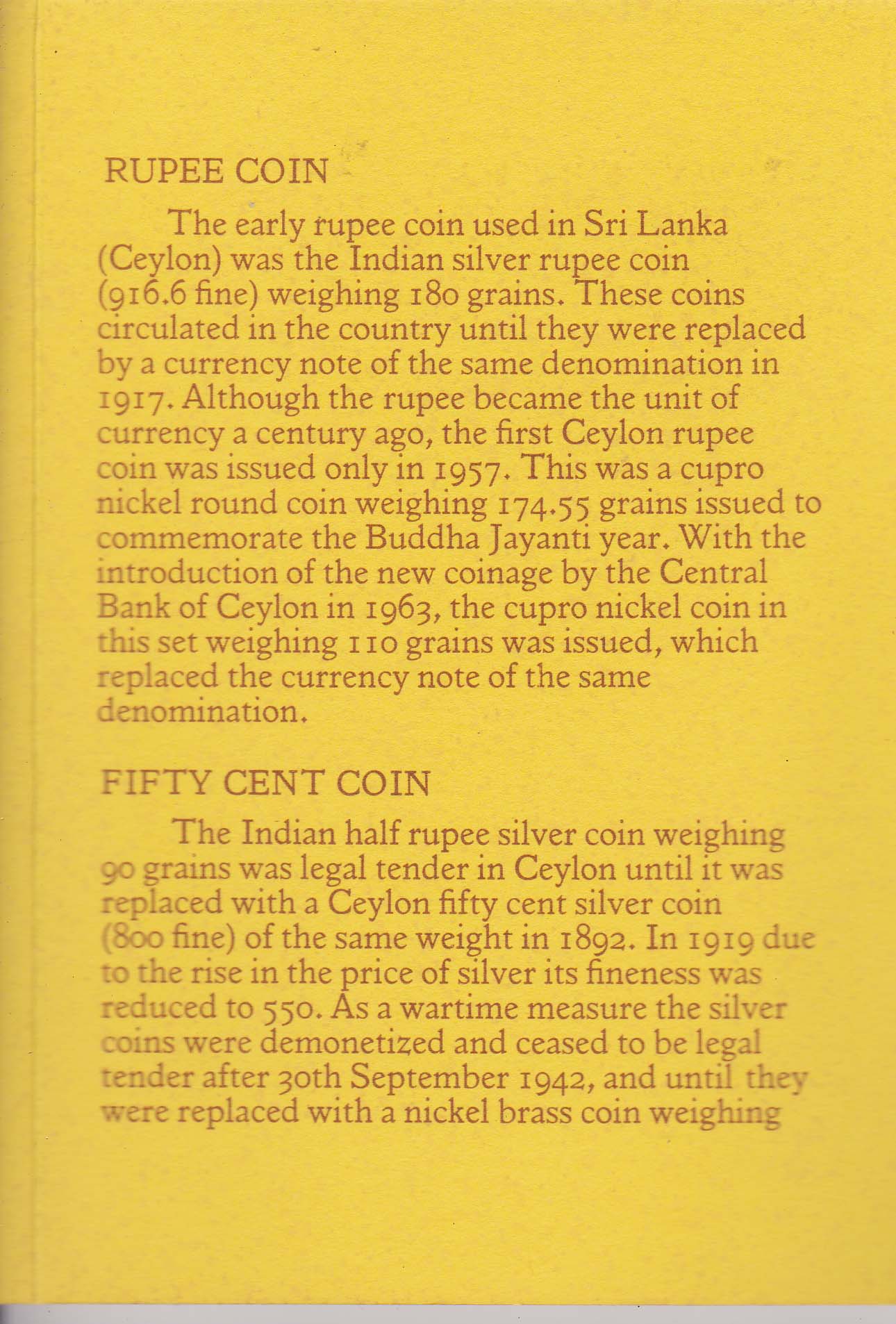
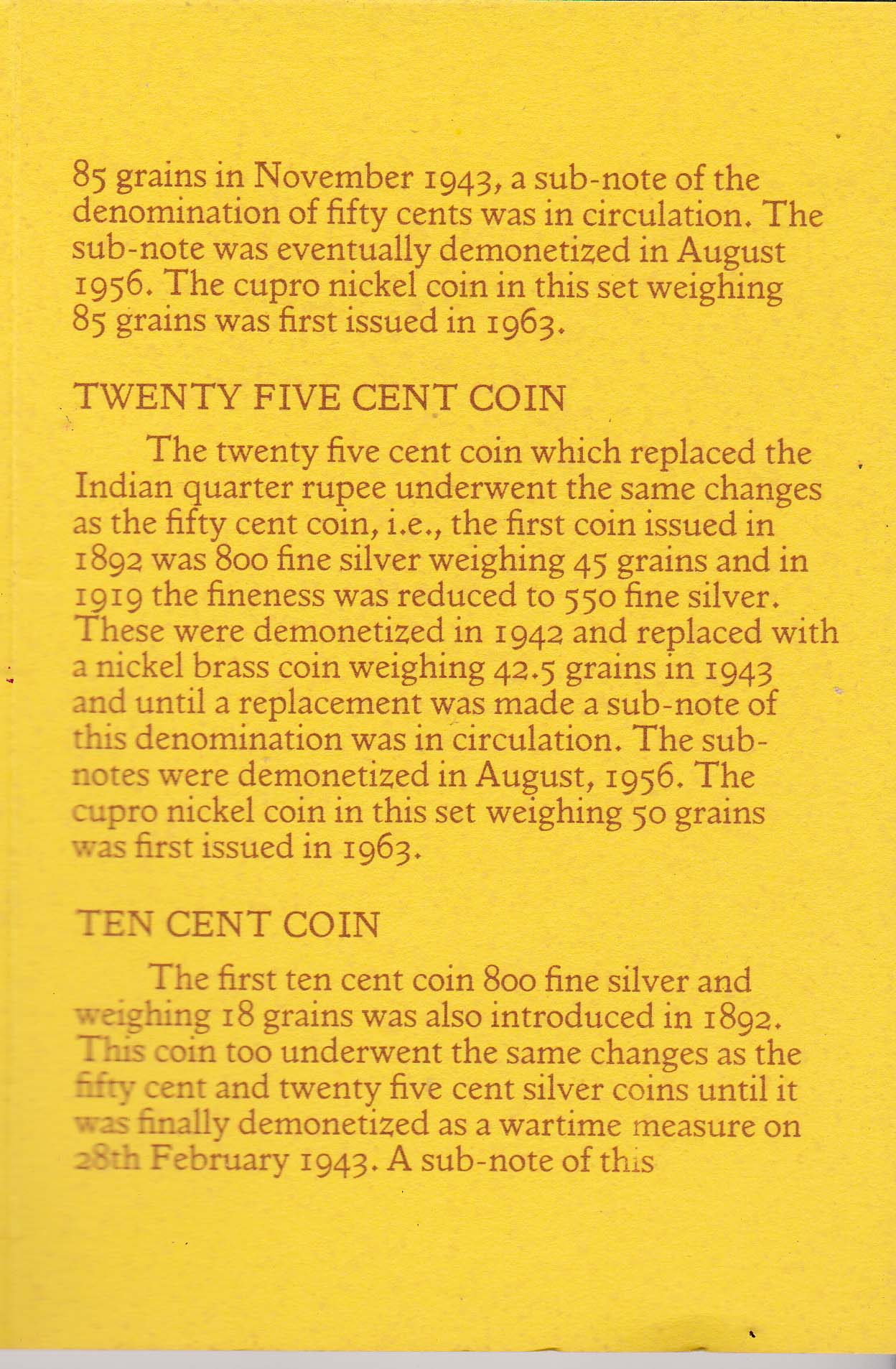
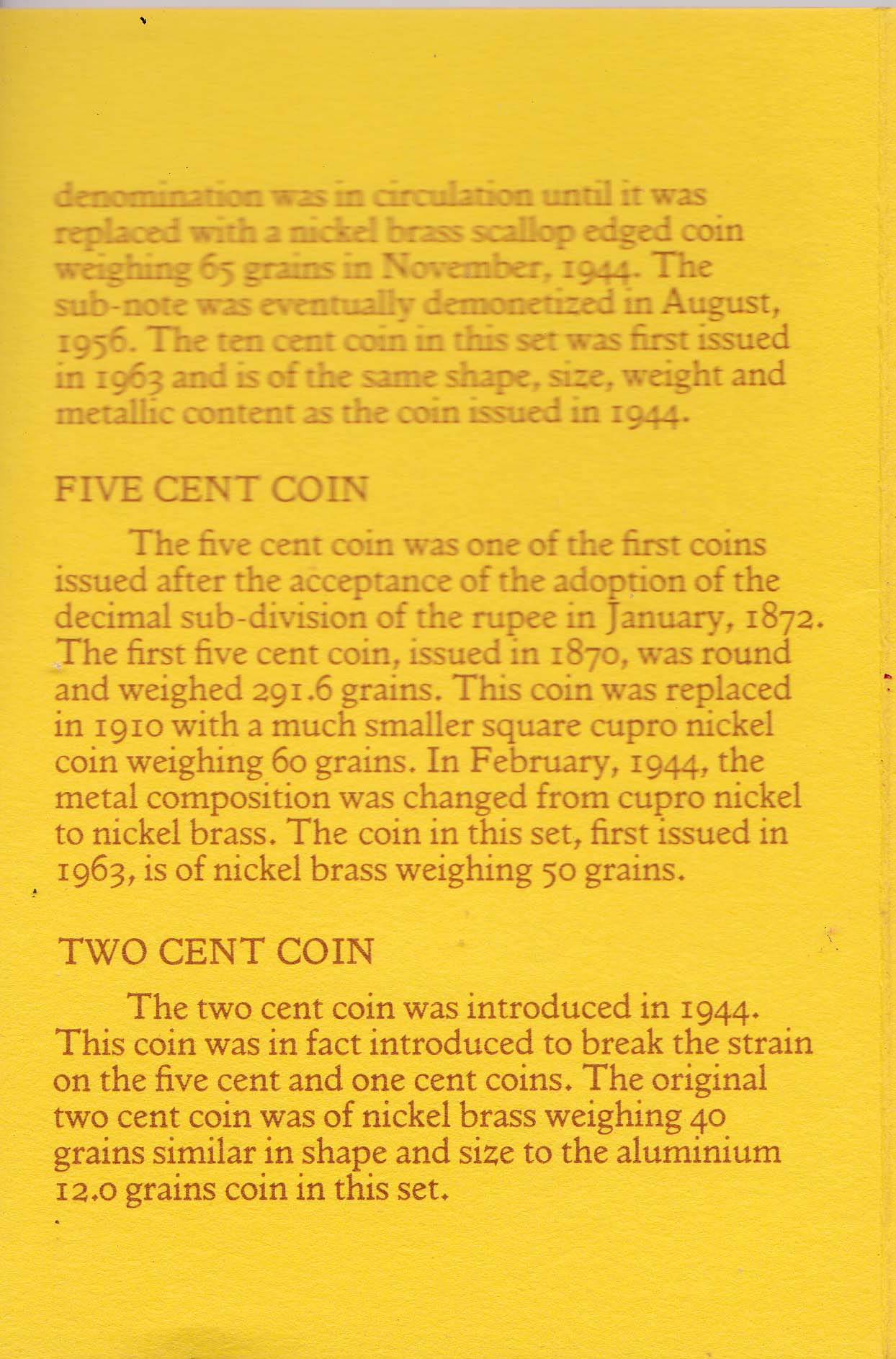
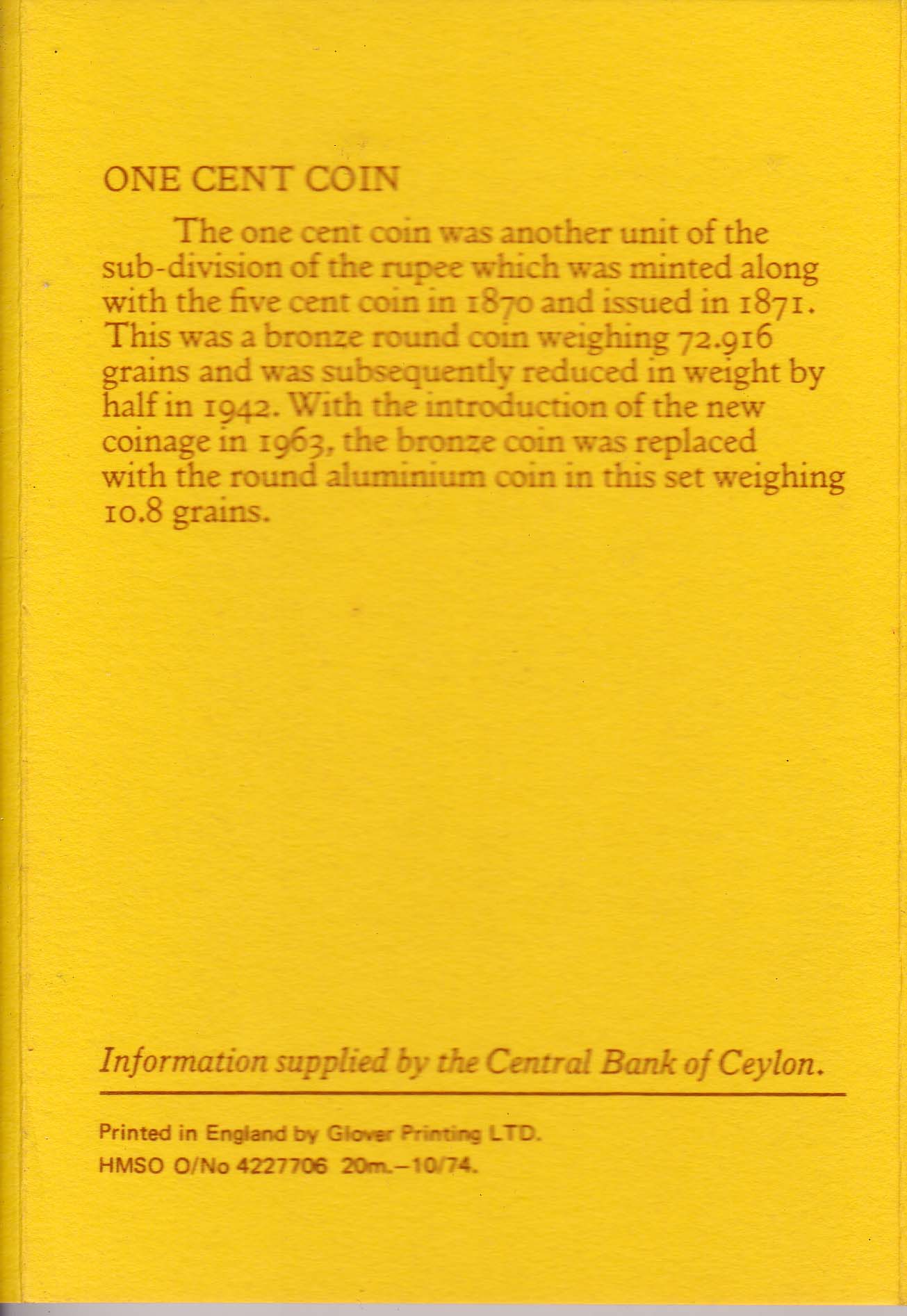
A Proof Coin Set minted by the Royal Mint in 1974 October it its "Coins of the World" Series as the last issue of Ceylon coins before the official name in English changed to Sri Lanka on 1972 May 22nd.

| 
|

| 
|

| 
|

| 
|

| 
|
The coins in this set were introduced in 1963 and carry the armorial ensign of Ceylon on the obverse. All coins issued prior to 1963 carried the effigy of the ruling British monarch on the obverse.
Coins of the value of half of one cent and quarter of one cent were also issued in Ceylon in the early days. However, as these became of little use later, the half cent coin, though not demonetized went out of circulation, while the quarter cent was demonetized in October 1909. Both these coins were of bronze and weighed 36.458 grains and 18.229 grains respectively.
RUPEE COIN
The early rupee coin used in Sri Lanka (Ceylon) was the Indian silver
rupee coin (916.6 fine) weighing 18o grains. These coins circulated in
the country until they were replaced by a currency note of the same
denomination in 1917. Although the rupee became the unit of currency a
century ago, the first Ceylon rupee coin was issued only in 1957. This
was a cupro-nickel round coin weighing 174.55 grains issued to
commemorate the Buddha Jayanti year. With the introduction of the new
coinage by the Central Bank of Ceylon in 1963, the cupro-nickel coin
in this set weighing 110 grains was issued, which replaced the
currency note of the same denomination.
FIFTY CENT COIN
The Indian half rupee silver coin weighing go grains was legal tender
in Ceylon until it was replaced with a Ceylon fifty cent silver coin
(800 fine) of the same weight in 1892. In 1919 due to the rise in the
price of silver its fineness was reduced to 550. As a wartime measure
the silver coins were demonetized and ceased to be legal tender after
30th September 1942, and until they were replaced with a nickel-brass
coin weighing 85 grains in November 1943, a sub-note of the
denomination of fifty cents was in circulation. The sub-note was
eventually demonetized in August 1956. The cupro-nickel coin in this
set weighing 85 grains was first issued in 1963.
TWENTY FIVE CENT COIN
The twenty five cent coin which replaced the Indian quarter rupee
underwent the same changes as the fifty cent coin, i.e., the first
coin issued in 1892 was 800 fine silver weighing 45 grains and in 1919
the fineness was reduced to 550 fine silver. These were demonetized in
1942 and replaced with a nickel-brass coin weighing 42.5 grains in
1943 and until a replacement was made a sub-note of this denomination
was in circulation. The sub-notes were demonetized in August,
1956. The cupro-nickel coin in this set weighing 50 grains was first
issued in 1963.
TEN CENT COIN
The first ten cent coin 800 fine silver and weighing 18 grains was
also introduced in 1892. This coin too underwent the same changes as
the fifty cent and twenty five cent silver coins until it was finally
demonetized as a wartime measure on 28th February 1943. A sub-note of
this denomination was in ciraculation until it was replaced with a
nickel-brass scallop edged coin weighing 65 grains in November,
1944. The sub-note was eventually demonetized in August, 1956_ The ten
cent coin in this set was first issued in 1963 and is of the same
shape, size, weight and metallic content as the coin issued in 1944.
FIVE CENT COIN
The five cent coin was one of the first coins issued after the
acceptance of the adoption of the decimal sub-division of the rupee in
January, 1872. The first five cent coin, issued in 187o, was round and
weighed 291.6 grains. This coin was replaced in 1910 with a much
smaller square cupro-nickel coin weighing 6o grains In February, 1944,
the metal composition was changed from cupro-nickel to nickel-brass.
The coin in this set, first issued in 1963, is of nickel-brass
weighing 50 grains.
TWO CENT COIN
The two cent coin was introduced in 1944. This coin was in fact
introduced to break the strain on the five cent and one cent
coins. The original two cent coin was of nickel-brass weighing 40
grains similar in shape and size to the aluminium 12.0 grains coin in
this set.
ONE CENT COIN
The one cent coin was another unit of the sub-division of the rupee
which was minted along with the five cent coin in 187o and issued in
1871. This was a bronze round coin weighing 72.916 grains and was
subsequently reduced in weight by half in 1942. With the introduction
of the new coinage in 1963, the bronze can was replaced with the round
aluminium coin in this set weighing 10.8 grains.
Information supplied by the Central Bank of Ceylon.
The Proof sets with coins Commonwealth countries were issued as Flat Packs within an (6frac12; x 4frac12; inch) Envelope and a folded information card.
The Proof Set was scanned at 300 dpi and needs to be photographed to get depth of focus. It was purchased from the Central Bank of Sri Lanka in the 1990s.